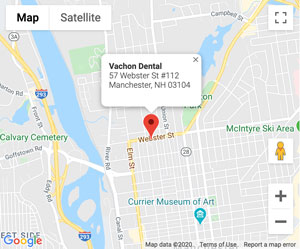Porcelain Crowns
Dental crowns are oral prosthetic devices designed to cover damaged teeth. Unlike dentures, crowns are fixed devices that are cemented directly onto tooth or implant surfaces, and they can only be removed by a qualified oral health care professional. Crowns are used as both cosmetic and protective measures — for instance, and they may be used to correct the appearance of discolored or chipped teeth as well as put in place to protect fractured or otherwise fragile teeth from further damage. Your dentist may also suggest a crown to replace a large filling when there isn’t enough existing natural tooth material and when it’s necessary to provide a cover for teeth after a root canal treatment.
Here’s what you need to know about dental crowns:
How They Work
The first step in outfitting a patient with a crown involves reducing the suitable tooth size to wear a crown will fit over it easily and painlessly. After this procedure is performed, the dentist will then take an impression of the tooth to use to develop a customized crown by a qualified dental lab. The dentist will also determine right shade so that the crown will blend in seamlessly with the rest of your teeth. A temporary crown will probably be applied while waiting for the lab to create the permanent one. When properly cared for, a crown should last a lifetime.
Materials used to make crowns include porcelain, ceramic, various metal alloys, including gold, and acrylic. Porcelain crowns are generally preferred for visible teeth near or at the front of the mouth, while those constructed of metal alloys may be recommended for back teeth.
Caring for Your Crown
After your permanent crown has been put into place, avoid chewing on hard foods or ice, and always practice good oral hygiene and schedule regular cleanings and checkups with your dentist.
Dental Bridges
Dental bridges are designed for bridging gaps between healthy teeth where one or more teeth may have decayed or are missing. Getting dental bridges in Manchester, NH requires at least two different dental visits and a patient has to have good oral health and strong bone support in the jaw. In essence, individuals with poor oral health might not be the right candidates because wearing dental bridges requires the removal of particular protective tooth enamel. Here are three types of dental bridges that your dentist may recommend.
Traditional dental bridges
These are the most popular designs of dental bridges. They consist of fake teeth that are held in place by abutments or dental crowns. The dental crowns have to be cemented to the adjacent healthy teeth before installing the dental bridges. In other words, the dentist will have to prepare the adjacent healthy teeth by removing the enamel permanently. Meaning, you will still have to use the abutments in the future even when you want to change the type of dental bridges.
For more information about crowns and bridges or other dental services in Manchester, NH, please feel free to contact our office at your earliest convenience.

1-603-627-2092
Fax -
1-603-944-9330


